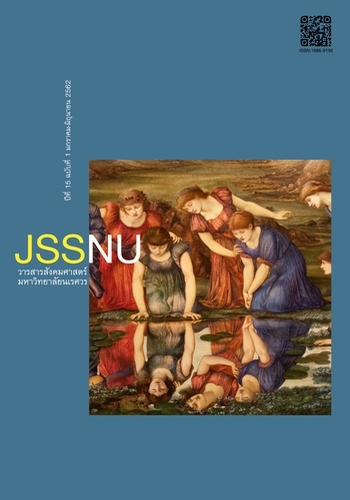Analyses and Alternatives for Determining the Size of Local Government’s Contingency Funds: A Case Study of Nonthaburi Province
Main Article Content
Abstract
This paper explores facts and related legal requirements of local government’s contingency reserve funds, which have long been regarded as a wasteful mean of local saving. Detailed data from local governments in Nonthaburi Province were analyzed to gain some insights for formulating several alternatives in managing the contingency funds. Based on the data, some recommendations regarding the minimum reserves as well as procedural changes have been discussed in order to prevent opportunity losses and to promote steady local development endeavors.
Downloads
Download data is not yet available.
Article Details
How to Cite
Krueathep, W. (2019). Analyses and Alternatives for Determining the Size of Local Government’s Contingency Funds: A Case Study of Nonthaburi Province. Journal of Social Sciences Naresuan University, 15(1), 15_191–215. retrieved from https://so04.tci-thaijo.org/index.php/jssnu/article/view/201363
Section
Review Paper
References
Joyce, Philips. 2001. “What’s So Magical about Five Percent? A Nationwide Look at Factors
That Influence the Optimal Size of State Rainy Day Funds.” Public Budgeting and
Finance, 21(1): 62-87.
Navin, John C., and Leo J. Navin. 1997. “The Optimal Size of Countercyclical Budget Stabilization
Funds: A Case Study of Ohio.” Public Budgeting and Finance, 17(2). 114-127.
Sobel, Russell, and Randall G. Holcombe. 1996. “The Impact of State Rainy Day Funds in
Easing State Fiscal Crises during 1990–1991 Recession.” Public Budgeting and Finance,
16(1): 28-48.
Vasche, Jon D., and Brads Williams. 1987. “Optimal Governmental Budgeting Contingency
Reserve Funds.” Public Budgeting and Finance, 7(1): 66-82.
วีระศักดิ์ เครือเทพ. 2554. การวิเคราะห์ฐานะทางการเงินขององค์กรปกครองส่วนท้องถิ่น. กรุงเทพฯ: วิทยาลัย
พัฒนาการปกครองท้องถิ่น สถาบันพระปกเกล้า.
ผู้จัดการออนไลน์. 2560. “ย้อนรอยแนวคิดล้วงเงินสะสม อปท.2 แสนล้าน.” สืบค้นเทื่อวันที่ 1 สิงหาคม
2561 จาก url:.
Krueathep, W. 2011. The Analyses of Local Government’s Financial Positions. Bangkok,
College of Local Government Development, King Prajadhipok’s Institute.
Manager Online. 2017. “Investigation of Tapping the 200 Billion Bahts of Local Goverment’s
Contengency Funds.” Accessed on 1 August 2018; url:
That Influence the Optimal Size of State Rainy Day Funds.” Public Budgeting and
Finance, 21(1): 62-87.
Navin, John C., and Leo J. Navin. 1997. “The Optimal Size of Countercyclical Budget Stabilization
Funds: A Case Study of Ohio.” Public Budgeting and Finance, 17(2). 114-127.
Sobel, Russell, and Randall G. Holcombe. 1996. “The Impact of State Rainy Day Funds in
Easing State Fiscal Crises during 1990–1991 Recession.” Public Budgeting and Finance,
16(1): 28-48.
Vasche, Jon D., and Brads Williams. 1987. “Optimal Governmental Budgeting Contingency
Reserve Funds.” Public Budgeting and Finance, 7(1): 66-82.
วีระศักดิ์ เครือเทพ. 2554. การวิเคราะห์ฐานะทางการเงินขององค์กรปกครองส่วนท้องถิ่น. กรุงเทพฯ: วิทยาลัย
พัฒนาการปกครองท้องถิ่น สถาบันพระปกเกล้า.
ผู้จัดการออนไลน์. 2560. “ย้อนรอยแนวคิดล้วงเงินสะสม อปท.2 แสนล้าน.” สืบค้นเทื่อวันที่ 1 สิงหาคม
2561 จาก url:
Krueathep, W. 2011. The Analyses of Local Government’s Financial Positions. Bangkok,
College of Local Government Development, King Prajadhipok’s Institute.
Manager Online. 2017. “Investigation of Tapping the 200 Billion Bahts of Local Goverment’s
Contengency Funds.” Accessed on 1 August 2018; url:


